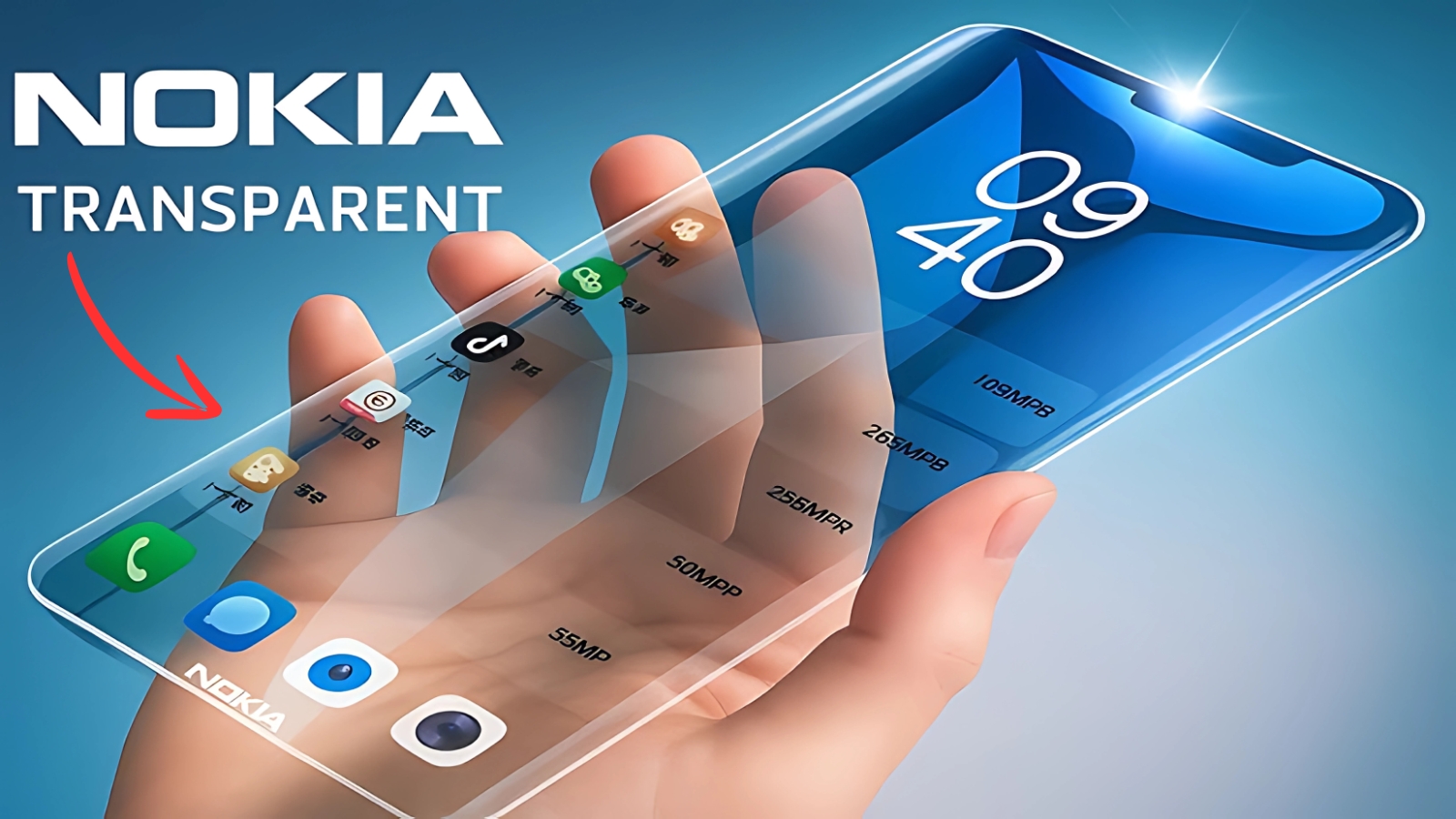Nokia Transparent: The internet recently exploded with excitement over what appeared to be Nokia’s revolutionary transparent smartphone, sparking millions of views and widespread speculation about the future of mobile technology. However, the story behind this viral sensation reveals a fascinating intersection of digital marketing, consumer psychology, and the ongoing evolution of smartphone design concepts.
The Viral Phenomenon That Captured Global Attention
A simple TikTok video showing a woman apparently scrolling on a piece of glass quickly became one of the most talked-about tech moments of 2025. The short clip, posted by user CatGPT, accumulated over 26 million views as viewers struggled to understand what they were witnessing. Comments flooded in suggesting the device was a “Nokia Clear Phone” priced at €35,000, with many users frantically searching online to confirm whether Nokia had secretly launched a transparent smartphone.
The video’s viral success demonstrates how hungry consumers are for genuine innovation in a smartphone market that many perceive as stagnating. The transparent phone concept represented everything people want to see in modern technology: breakthrough design, futuristic aesthetics, and functionality that seems almost magical.

The Truth Behind the Transparency
The reality proved far more interesting than the initial speculation. In a follow-up video, CatGPT revealed that the mysterious device was actually a “methaphone” – a clear acrylic slab shaped like an iPhone, designed by her friend as a digital detox tool. The concept behind this transparent prop was to provide something that feels like a phone without the addictive technology, addressing growing concerns about smartphone dependency.
This revelation highlighted a crucial disconnect between what consumers imagine technology could be and what companies actually develop. The methaphone’s success as a viral sensation suggests that people are genuinely interested in rethinking their relationship with mobile devices, even if the solution comes in unexpected forms.
Nokia’s Actual Transparent Phone Legacy
While the viral video was staged, Nokia’s connection to transparent phone concepts isn’t entirely fictional. The company has a rich history of innovative design concepts, and transparent phone ideas have appeared in various concept galleries and design portfolios over the years. Design studios and independent creators have produced stunning transparent Nokia phone renders, showcasing how such devices might look and function.
These concept designs typically feature glass encasements and transparent displays that would theoretically allow users to see through portions of the device while maintaining full smartphone functionality. However, these remain firmly in the realm of concept art rather than production-ready technology.
The Technical Challenges of Transparent Smartphones
Creating a truly functional transparent smartphone presents enormous engineering obstacles that explain why established manufacturers like Nokia haven’t pursued this technology commercially. Camera sensors represent one of the most significant challenges, as there’s currently no viable method for making image sensors transparent while maintaining their functionality.
Similarly, essential components like SIM cards, memory chips, speakers, and processors cannot be made transparent without compromising their performance. Battery technology poses another critical limitation, as transparent battery solutions remain experimental and far less efficient than traditional power sources.
The display technology itself would require revolutionary advances in OLED or AMOLED screens, potentially incorporating MicroLEDs that allow light to pass through unused portions. While these technologies exist in laboratory settings, mass production at consumer-friendly prices remains years away.
Nokia’s Current Market Strategy
Under HMD Global’s licensing agreement, Nokia’s actual 2025 product lineup focuses on practical, consumer-friendly devices rather than experimental concepts. Recent releases include the Nokia 3210 (2024), a revival of the iconic 1999 model updated with 4G connectivity, along with the Nokia 235 4G and Nokia 2660 Flip.
This strategy reflects Nokia’s understanding of market realities. While consumers express fascination with futuristic concepts, purchasing decisions typically favor reliable functionality, reasonable pricing, and proven performance over experimental features.
Bajaj Platina 125 – New look motorcycle launch for high mileage
The Psychology of Futuristic Design
The transparent phone phenomenon reveals important insights about consumer psychology and technology expectations. People are drawn to designs that feel revolutionary and hint at a more advanced future, even when practical implementation remains distant.
This fascination with transparency in technology connects to broader cultural associations with innovation, sophistication, and progress. Transparent designs suggest openness, honesty, and technological advancement that transcends current limitations.
Nokia Transparent Looking Forward: Concept Versus Reality
The viral Nokia transparent phone story illustrates the complex relationship between consumer desires, viral marketing, and technological capability. While the specific device was fictional, the enthusiasm it generated suggests genuine market interest in innovative smartphone designs.
As technology continues advancing, elements of transparency may eventually appear in consumer devices, though likely in more subtle forms than the completely transparent phones that captured imaginations online. The challenge for manufacturers remains balancing consumer excitement for futuristic concepts with the practical requirements of creating functional, affordable devices.
The Nokia transparent phone phenomenon ultimately serves as a reminder that innovation in technology requires both visionary thinking and practical engineering – and sometimes, the most powerful innovations begin as simple concepts that capture our collective imagination.
